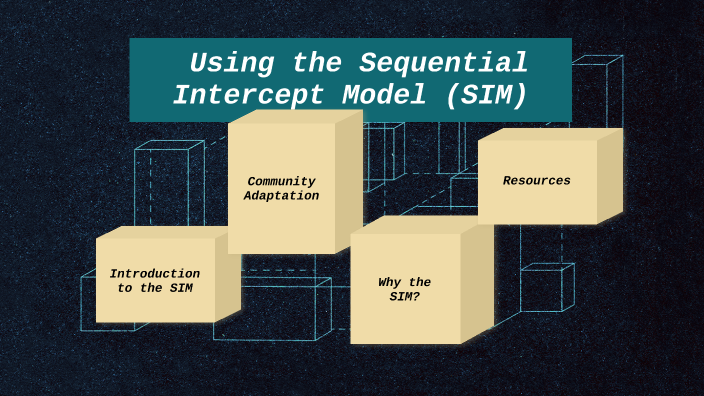

- SEQUENTIAL INTERCEPT MODEL AND SYSTEMS INTEGRATION TRIAL
- SEQUENTIAL INTERCEPT MODEL AND SYSTEMS INTEGRATION SERIES
For example, the community courts would use the information collected from neighbourhood to find out the underlying causes of the criminals’ illegal behaviours related to mental illness or divert those criminals from jails into community-based mental health treatment to reduce the probability of the recurrence of crimes. Hence, approaches within the local community, particularly problem-solving courts in the condemnation process have been increasing throughout the world. According to research, people with mental disorder have higher chances of being taken into custody and are always charged with longer incarceration than people without mental disorder. The third intercept occurs after the initial hearings or detention and is associated with jails and courts. For example, probation could be conducted for those individuals with mental disease by employing experts during hearings to assess the mental conditions of the arrested people and determining the possible options for those people, such as further psychological treatments within the mental health system, instead of going to jail.
SEQUENTIAL INTERCEPT MODEL AND SYSTEMS INTEGRATION TRIAL
The second intercept refers to post-arrest actions during initial hearings or detention, which offer diversion programs for arrested individuals from encountering standard trial and judgement. The objective of this level of intercept is therefore to provide people who have behavioural health disorders with proper therapies instead of sending them into the next level of criminal justice system. That is when a program called specialised policing responses (SPRs) is developed by law enforcement agencies through collaborations with other mental health services providers to prioritise transfer of people to receive mental health treatments rather than getting arrested. Police officers initially make critical decisions to decide whether an individual is innocent or should be arrested, however, many complex situations have occurred within the police management for mental health crisis due to lack of time and experience. The first intercept refers to law enforcement and emergency services. There are five points of interception within the Sequential Intercept Model where interventions can be conducted at each point to prevent further criminalisation of population with mental illness. Description įlow of five points of interception within the Sequential Intercept Model Meanwhile, researchers and policymakers could also apply the methods within the Sequential Intercept Model for future use. The diversion programs at schools for students’ behaviour management would be conducted at first and problem-solving courts from Intercept 3 could also be used to provide treatments for teenagers. A significant example is the application for juvenile justice system with two intercepts within the model involved. Īs an effective conceptual tool, the Sequential Intercept Model could be applied to many real-life situations. And finally, it was used in certain policies under the federal level particularly the veterans’ psychological issues and their associated medical treatments. After the success of Summit County, the model was implemented at the regional and state level starting from Pennsylvania and continuously spread to other states with larger task force using this model to illustrate and solve related issues. Summit County developed partnerships with the National GAINS centre to launch programs for community-based mental health services. Traced from the early 1990s, the Sequential Intercept Model was first established in Summit County through the collaboration of Munetz, Griffin and Steadman due to the trend of increasing number of criminals with mental health problems appeared.
SEQUENTIAL INTERCEPT MODEL AND SYSTEMS INTEGRATION SERIES
By understanding and using the model, communities can develop a series of strategies to increase diversion of individuals with mental disorder from the criminal justice system and to help them receive proper community-based treatments. The Sequential Intercept Model clarifies five points at which standard processing of crimes can be intervened with community-based actions, so that individuals with mental and psychiatric disorders would not have to further penetrate the criminal justice system.


 0 kommentar(er)
0 kommentar(er)
